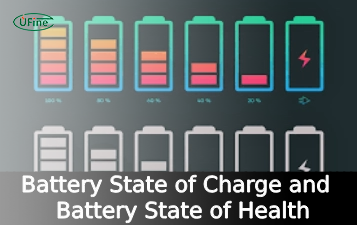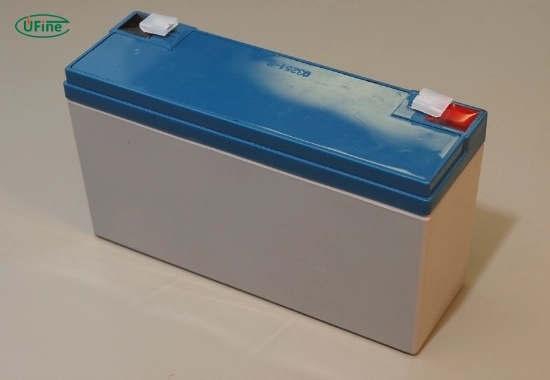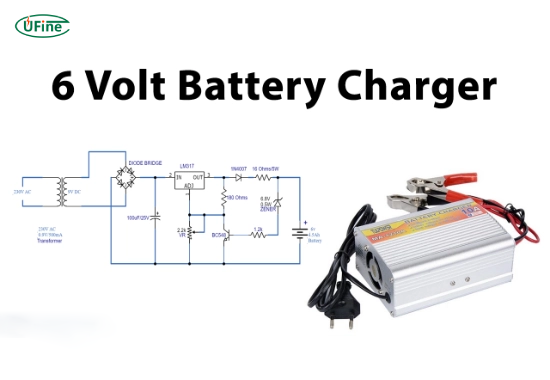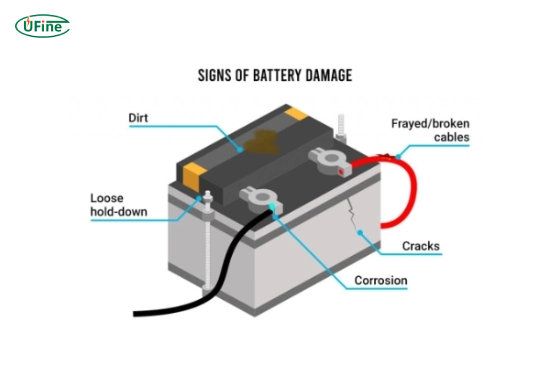
- Part 1. What is a 6V battery?
- Part 2. What happens when you charge a 6V battery with a 12V charger?
- Part 3. Why is overcharging dangerous for 6V batteries?
- Part 4. What's the proper way to charge a 6V battery?
- Part 5. Can you use a resistor to charge a 6V battery with a 12V charger?
- Part 6. How to identify if your 6V battery is damaged?
- Part 7. What are the long-term consequences of improper charging?
- Part 8. Are there any exceptions to this rule?
- Part 9. Tips for maintaining your 6V battery
- Part 10. FAQs
Charging a 6V battery with a 12V charger might seem like a quick fix, but it comes with significant risks. Many people tempt themselves to try it, especially when they can’t find the correct charger. However, improper charging can damage your battery, create safety hazards, and even result in permanent failure. In this article, we’ll explore the dangers of charging a 6V battery with a 12V charger, explain why it’s not recommended, and suggest safer alternatives.
Part 1. What is a 6V battery?
Smaller devices like motorcycles, lawnmowers, golf carts, and children’s toys commonly use a 6V battery, which operates at a nominal voltage of 6 volts. These batteries are smaller than the more common 12V batteries used in cars and larger equipment, but they are equally essential for powering low-voltage devices.
6V batteries come in various chemistries, such as lead-acid, AGM (Absorbent Glass Mat), and lithium-ion. Each type has specific charging requirements to ensure optimal performance and longevity.
Part 2. What happens when you charge a 6V battery with a 12V charger?
Can you charge a 6V battery with a 12V charger? Technically, yes, but it’s highly discouraged. Here’s why:
Using a 12V charger on a 6V battery forces the battery to handle double its intended voltage. This can lead to overcharging, overheating, and even internal damage. Batteries are designed to charge at a specific voltage and current range. Exceeding this range compromises the chemical structure of the battery, shortening its lifespan or rendering it completely useless.
Part 3. Why is overcharging dangerous for 6V batteries?
Overcharging occurs when a battery receives more voltage than it can handle. For a 6V battery, charging at 12V creates excessive heat, causing the electrolyte inside the battery to evaporate or degrade. This leads to several risks:
- Thermal runaway: Excessive heat can cause a chain reaction, making the battery hotter and potentially leading to an explosion.
- Battery swelling: Overcharging may cause the battery casing to swell or crack, creating a safety hazard.
- Permanent damage: The internal plates and chemical composition of the battery may sustain irreversible damage.
Part 4. What’s the proper way to charge a 6V battery?
The safest way to charge a 6V battery is to use a charger specifically designed for them. These chargers are calibrated to deliver the correct voltage and current, ensuring the battery charges efficiently without overcharging.
If you don’t have a 6V charger, you can use a smart charger with adjustable voltage settings. Smart chargers can detect the battery’s voltage and adjust accordingly, providing a safer alternative.
Part 5. Can you use a resistor to charge a 6V battery with a 12V charger?
Some suggest using a resistor or similar device to reduce the 12V charger’s output to 6V. While this might sound like a practical solution, it’s not recommended for several reasons:
- The resistor might not consistently regulate the voltage, leading to uneven charging.
- Incorrect wiring or resistance values could still damage the battery or charger.
- It’s a temporary and risky fix that doesn’t replace a proper 6V charger.
Part 6. How to identify if your 6V battery is damaged?
If you’ve accidentally charged your 6V battery with a 12V charger, it’s important to check for signs of damage. Here are some common indicators:
- Swelling or deformation of the battery casing.
- Leaking electrolytes may appear as a liquid or crusty residue around the terminals.
- Overheating during or after charging.
- Loss of capacity means the battery can no longer hold a charge effectively.
If you notice these signs, discontinue use immediately and replace the battery if necessary.
Part 7. What are the long-term consequences of improper charging?
Charging a 6V battery with a 12V charger doesn’t just cause immediate damage; it can also lead to long-term issues, such as:
- Reduced lifespan: The battery will fail prematurely due to consistent overcharging.
- Higher replacement costs: You’ll need to replace damaged batteries more frequently, increasing expenses.
- Safety risks: A compromised battery poses a safety hazard, especially during use or storage.
Part 8. Are there any exceptions to this rule?
In rare cases, technicians might use a 12V charger on a 6V battery under controlled conditions, such as when attempting to revive a deeply discharged battery. However, this requires expert knowledge, specialized equipment, and constant monitoring. For the average user, it’s not a viable or safe option.
Part 9. Tips for maintaining your 6V battery
To extend the life of your 6V battery and avoid unnecessary risks, follow these tips:
- Use the correct charger: Always use a charger designed for 6V batteries or a smart charger with adjustable settings.
- Monitor charging: Avoid leaving the battery unattended while charging to prevent overcharging or overheating.
- Store properly: Keep the battery in a cool, dry place when not in use to prevent degradation.
- Check regularly: Inspect the battery for signs of wear, corrosion, or damage.
- Avoid deep discharges: Recharge the battery to maintain capacity before it becomes completely drained.
Part 10. FAQs
-
Can you safely charge a 6V battery with a 12V charger?
No, charging a 6V battery with a 12V charger is not safe. It risks overcharging, overheating, and permanently damaging the battery. -
What happens if you overcharge a 6V battery?
Overcharging can cause the battery to overheat, swell, or leak. In extreme cases, it may explode or fail. -
Can a smart charger charge a 6V battery safely?
Smart chargers with adjustable voltage settings can safely charge a 6V battery. Ensure the charger is set to 6V before use. -
How long does it take to charge a 6V battery?
The charging time depends on the battery’s capacity and the charger’s output. On average, using the correct charger, it takes 4–8 hours to fully charge a 6V battery. -
Is it worth repairing a damaged 6V battery?
In most cases, repairing a damaged 6V battery isn’t cost-effective. Replacing it with a new one is usually safer and more reliable.
Related Tags:
More Articles

Battery State of Charge and Battery State of Health
Battery SoC vs. SoH explained: Learn professional methods to measure charge levels, test health status, and optimize battery performance for longer lifespan.
How Do I Prevent Battery Cycles?
Learn what a battery cycle and cycle count mean, plus 9 expert tips to reduce cycles, protect capacity, and extend the life of phone, laptop, and EV batteries.
Battery Terminal Stud Vs. Battery Terminal Screw: Which is the Better?
Compare battery terminal stud vs screw: pros, cons, and expert tips to choose the right car battery connector and prevent failures.
NMC vs. LFP vs. LTO Batteries: A Complete Comparison Guide
Compare NMC battery, LFP vs NMC, and LTO battery for EVs & energy storage. Learn energy density, lifespan, safety, cost per kWh, and applications.
A Complete Guide to 3.7 Volt Battery Sizes
Learn 3.7V battery sizes with chart & dimensions. Compare Li-ion vs LiPo 3.7V batteries, applications, and tips to choose the right rechargeable battery.





